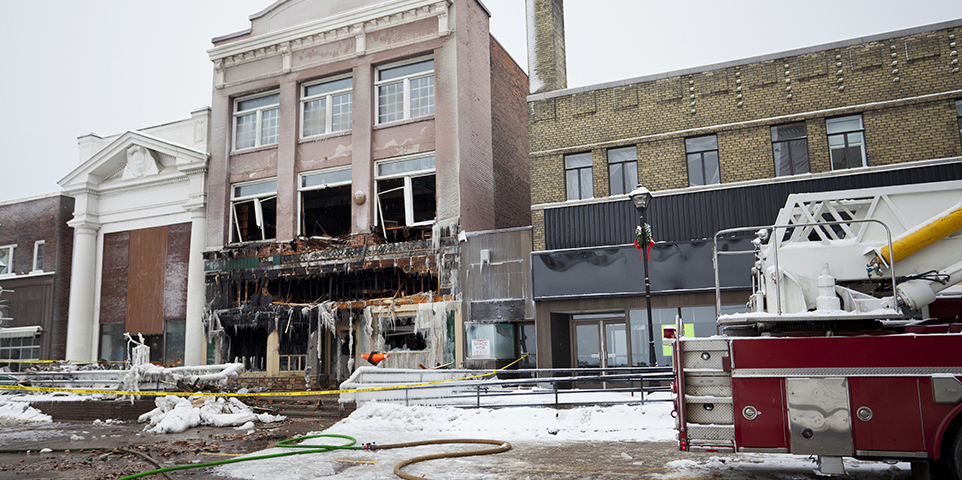MEMBERSHIP
AMPLIFY
EN ESPAÑOL
Connect With Us
- Popular search terms
- Automobile
- Home + Renters
- Claims
- Fraud
- Hurricane
- Popular Topics
- Automobile
- Home + Renters
- The Basics
- Disaster + Preparation
- Life Insurance

|
(1) Including allowances for FAIR Plan and uninsured losses.
(2) Calculated by the Insurance Information Institute using ISO property loss and population estimates from the U.S. Census Bureau, Population Division.
Source: ISO®, a Verisk Analytics® business; U.S. Census Bureau, Population Division.
|
||||||||||||||||||||||||||||||||||||||||||||||||||||||||
(1) Estimates based on data reported by fire departments responding to the 2023 National Fire Experience Survey. May exclude reports from some fire departments.
(2) Does not include damage from major wildfires.
(3) Calculated from unrounded numbers by the Insurance Information Institute using the U.S Bureau of Labor Statistics' Inflation Calculator.
Source: Reproduced with permission from Fire Loss in the United States During 2023 by Shelby Hall and Ben Evarts, ©2024 National Fire Protection Association www.nfpa.org.
|
(1) Estimates based on data reported by fire departments responding to the 2023 National Fire Experience Survey. May exclude reports from some fire departments.
(2) Includes overall direct property loss to contents, structures, vehicles, machinery, vegetation or any other property involved in a fire. Excludes indirect losses, such as business interruption or temporary shelter costs.
(3) Includes manufactured homes.
(4) Includes hotels and motels, dormitories, rooming houses, residential board and care properties, and other residential properties.
(5) Public assembly, educational, institutional, retail, office, manufacturing, and industrial or utility properties.
(6) Outside storage, crops, timber, etc.
(7) Excludes crops and timber, with no value or loss involved.
(8) Property damage is not captured for brush, grass, or wildland fires with no loss or outside rubbish fires.
(9) Includes $5.5 billion property loss estimate from the wildfires predominantly on the island of Maui in Hawaii in August of 2023.
Source: Reproduced with permission from Fire Loss in the United States During 2023 by Shelby Hall and Ben Evarts, ©2024 National Fire Protection Association www.nfpa.org.
($ millions)
|
(1) Large-loss fires of $20 million or more in 2022.
Note: Loss data shown here may differ from figures shown elsewhere for the same event due to differences in the date of publication, the geographical area covered and other criteria used by organizations collecting the data.
Source: Reproduced with permission from Large-Loss Fires and Explosions in the United States in 2022 by Stephen G. Badger, ©2024 National Fire Protection Association www.nfpa.org.
($ millions)
|
||||||||||||||||||||||||||||||||||||||||||||||||||||||||||||
(1) Loss estimates are from National Fire Protection Association (NFPA) records. The list is limited to fires for which some reliable dollar loss estimates exists.
(2) Adjustment to 2024 dollars made on the National Fire Protection Association data using the Consumer Price Index.
(3) Differs from inflation-adjusted estimates made by other organizations due to the use of different collection criteria and deflators.
(4) Includes multiple fires.
Source: National Fire Protection Association. www.nfpa.org.
|
(1) Fires or explosions that kill five or more people in residential property, or three or more people in nonhome or nonstructural property.
(2) Fires with the same number of deaths receive the same rank.
Source: National Fire Protection Association. www.nfpa.org.
|
(1) Fires that kill five or more people in home property, or three or more people in nonhome or nonstructural property.
(2) Revised to 2,976 by government officials.
Source: National Fire Protection Association. www.nfpa.org.
|
(1) Based on deadliest single-builiding or complex fires and explosions.
(2) Revised to 2,976 by government officials
Source: National Fire Protection Association. www.nfpa.org